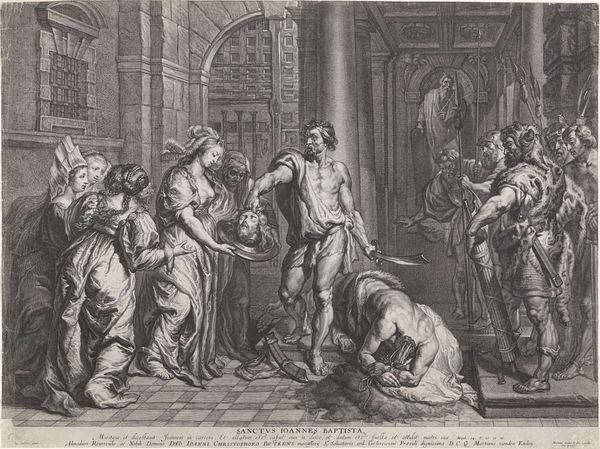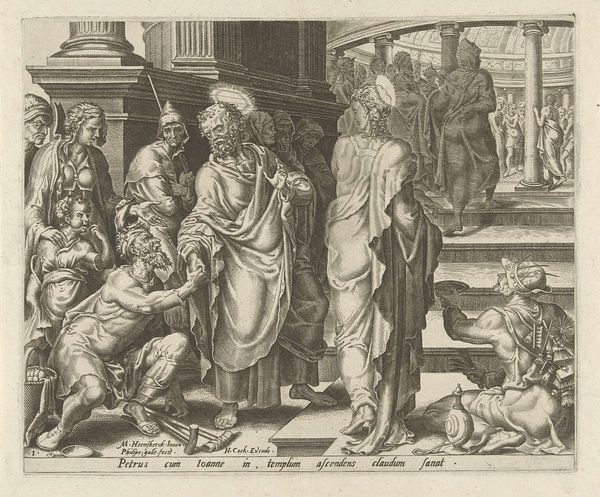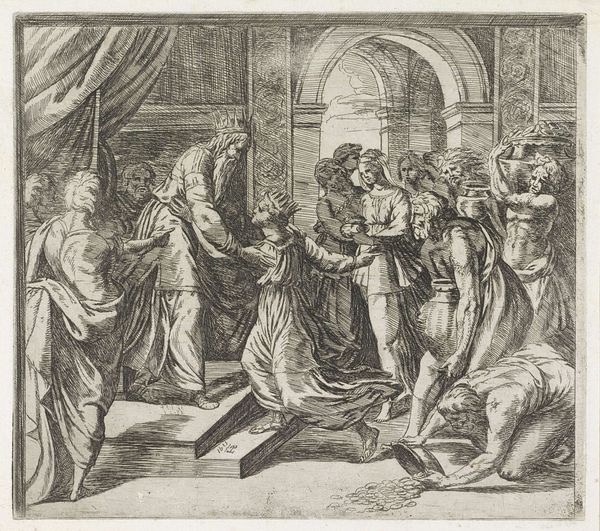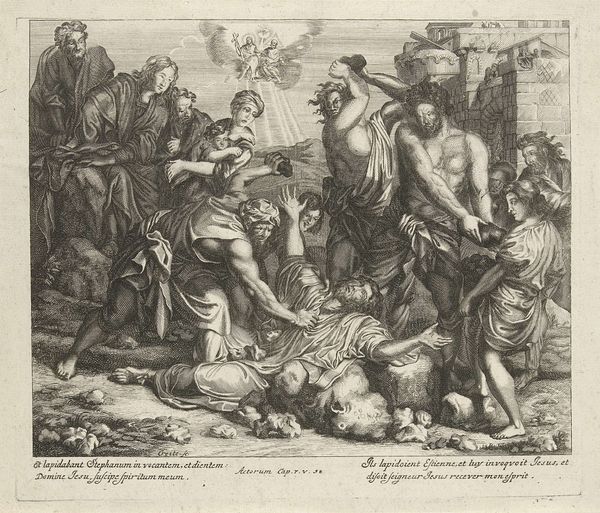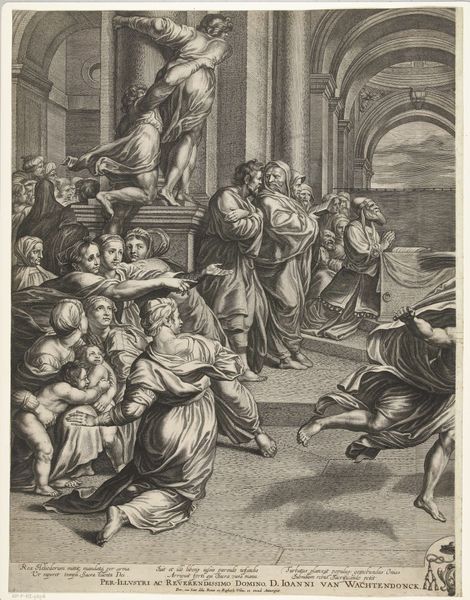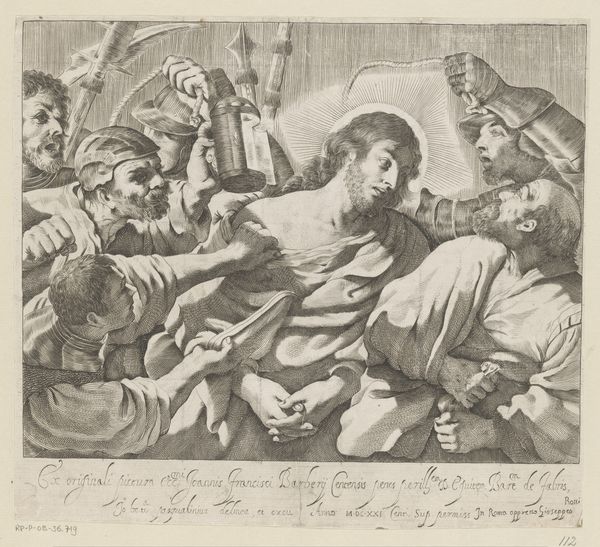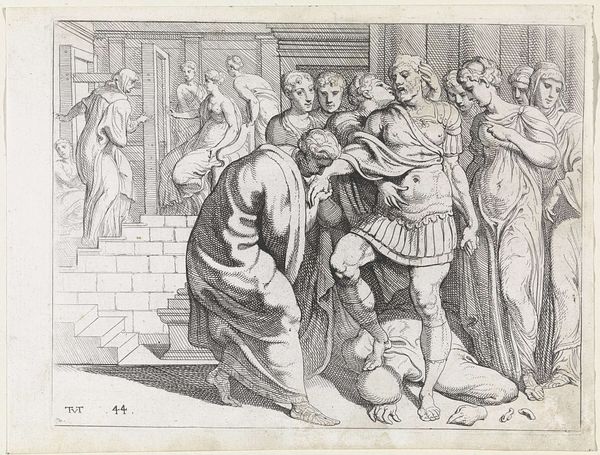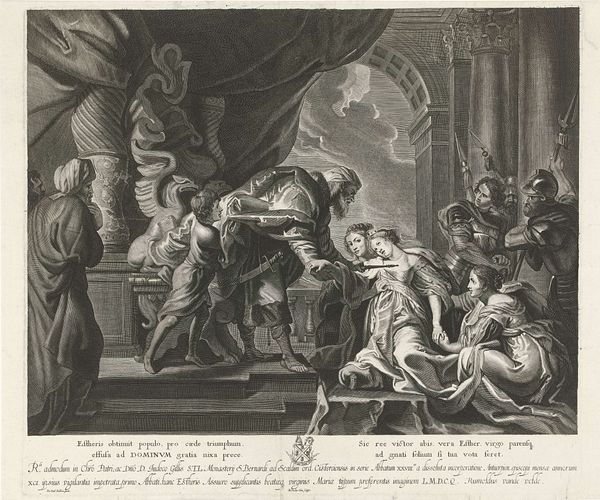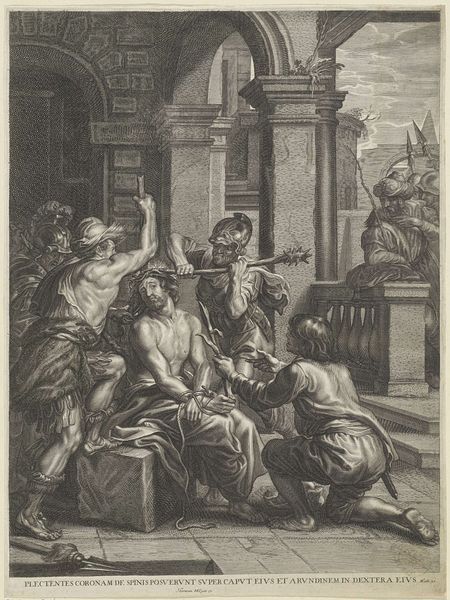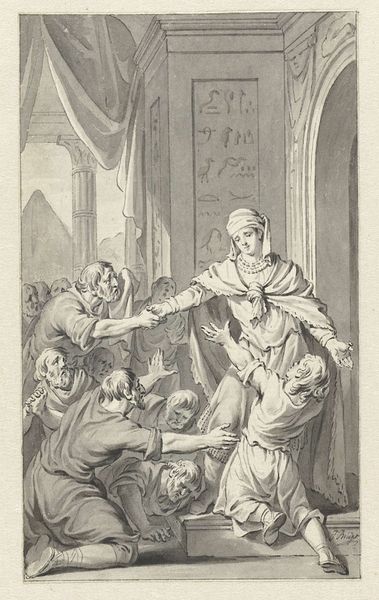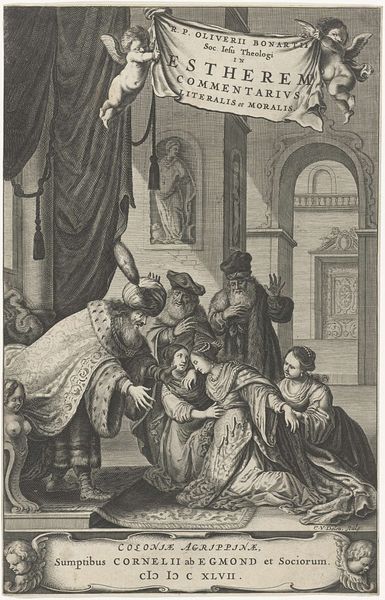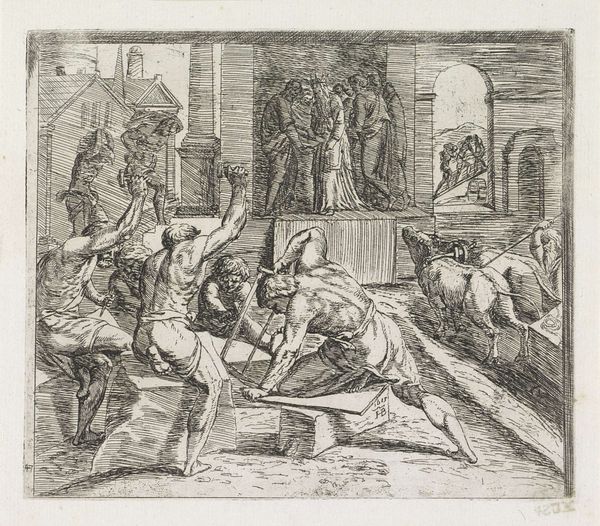
print, engraving
#
narrative-art
#
baroque
# print
#
figuration
#
history-painting
#
engraving
Dimensions: height 178 mm, width 240 mm
Copyright: Rijks Museum: Open Domain
Curator: We’re looking at Willem Panneels’ "Esther before Ahasuerus," an engraving dating from approximately 1610 to 1634, housed here at the Rijksmuseum. The subject comes from the Book of Esther. Editor: There’s an immediate sense of drama, wouldn’t you say? All those sharply etched lines amplify the emotional intensity, giving a distinct weight to the composition, despite it being just an engraving. Curator: Precisely! The diagonal composition, guiding the eye from Ahasuerus at the top left to the pleading Esther below, is critical. Panneels uses this directional pull to structure the narrative. The dark lines of the figures and their costumes add to the visual drama by emphasizing light against darkness to create that baroque aesthetic we associate with conflict. Editor: Indeed, the materiality emphasizes the hierarchy. The rough lines defining the king contrast with the finer, more delicate lines defining Esther and her attendants, conveying not just emotional state but also perhaps differing social conditions or gender roles imposed during print production at the time. You have these soldiers looking on, and their armor…that's so much labor and the iron ore! Curator: Absolutely, consider the king's hand reaching out. The engraver renders the texture and weight of the king's robes so palpably with an exquisite deployment of hatching and cross-hatching to create an optical depth and mass. Editor: I think looking at who actually owned prints like this—likely wealthier merchants and nobles—tells you more about the circulation of images in a specific socio-economic environment. I mean, engravings like this spread Biblical narratives far beyond the reach of conventional modes of seeing imagery in churches for instance, they became material objects circulating a particular narrative. Curator: Yes, you speak to the semiotic proliferation so endemic to Baroque engravings! Let's not overlook how the architectural setting functions here—the archway creates an almost theatrical stage for the scene, accentuating the role of each player within this narrative tableau. The perspective guides our focus. Editor: This highlights an important point; this type of affordable print allows wider populations than ever before to interpret and interact with the Esther narrative based on their individual, lived material conditions, reflecting a potentially significant paradigm shift for popular religion and collective identities at this time! Curator: Very true. This highlights Panneels' masterful ability to create an intimate yet operatic representation. The composition as a symbolic construction is powerful in its visual and intellectual implications. Editor: Right! I keep reflecting upon how its physical manifestation altered viewers’ relationships and understandings with religious imagery, as the means of distribution were linked intrinsically to expanding commerce.
Comments
No comments
Be the first to comment and join the conversation on the ultimate creative platform.

